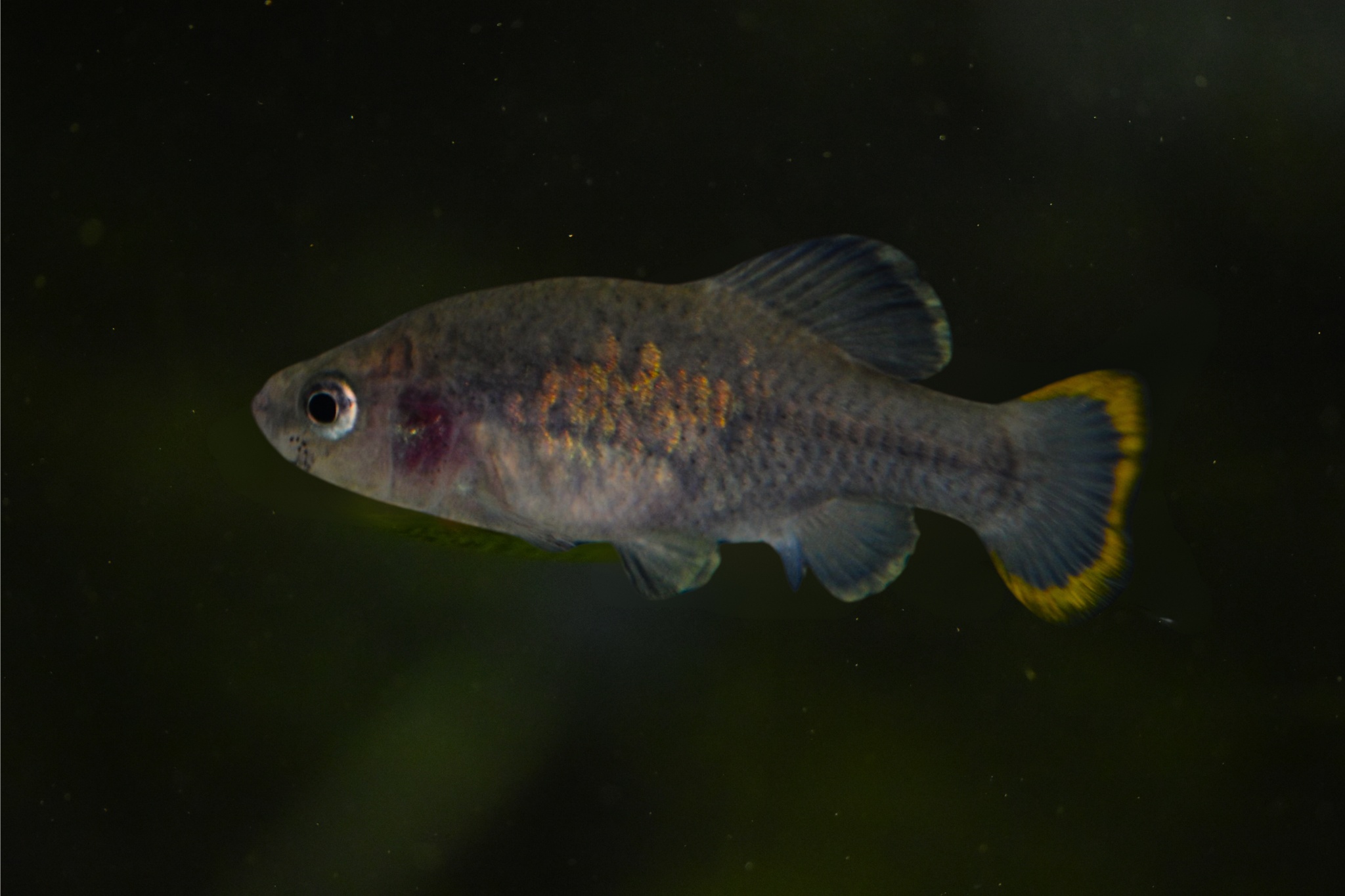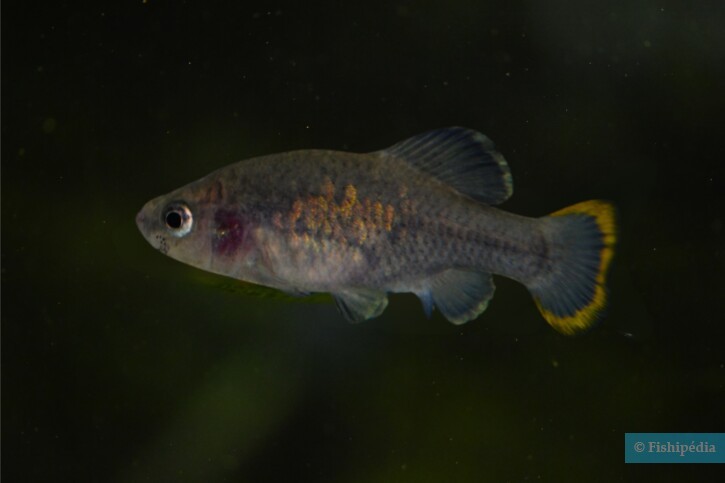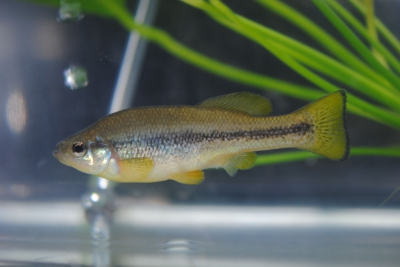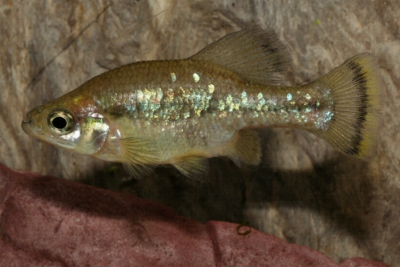tequila splitfin
| Scientific name | Zoogoneticus tequila |
|---|---|
| Descriptor | Webb & Miller |
| Year of description | 1998 |
| IUCN category (World) | EN |
| Family | Goodeidae |
| Genus | Zoogoneticus |


Introduction
The Tequila Splitfin (Zoogoneticus tequila) is a small viviparous fish endemic to the rivers and springs of the Río Teuchitlán basin in Mexico. Discovered in the 1990s, it was classified as extinct in the wild in 2013 due to habitat degradation.
Thanks to conservation and reintroduction efforts, a small population has been reinstated in its natural environment since 2016.
Who is it?
Morphology
-
Average size6 cm
-
Maximum size8 cm
-
Average size6 cm
-
Maximum size8 cm
How to recognize This fish ?
The Tequila Splitfin has a compact and robust morphology, with a streamlined body. Its coloration is subtle, ranging from gray to brown, with silver or golden reflections in males. The belly is lighter, almost white, and the body is marked with small dark spots. Its fins, especially in males, may be slightly colored with dark reflections and distinct markings.
Sexual dimorphism
Females are larger, reaching about 8 cm, while males measure around 6 cm. Males have a more vibrant coloration. During the breeding season, their fins become slightly more colorful to attract females.
Behaviour & Life cycle
-
dietcarnivorous
-
Sociabilitygregarious
-
territorialNo
-
Way of livingdiurnal
The Tequila Splitfin is a relatively calm and sociable fish, typically living in small groups. While there may be territorial interactions among males during the breeding season, aggressiveness remains low. Males may become slightly insistent towards females during breeding. They spend most of their time feeding by sifting through muddy bottoms.
Reproduction
-
Reproductionvivipare
The Tequila Splitfin is a viviparous species, where females give birth to fully formed fry after a gestation period of 60 to 65 days. In captivity, females can give birth to litters of 15 to 20 young.
Reproduction is not strictly seasonal but may be influenced by environmental conditions. There is no parental care after birth, with fry left to fend for themselves and evade predators.
Harmless species
This species poses no danger to humans.
Origin and distribution
Geographic distribution & Conservation
The Tequila Splitfin is endemic to Mexico, specifically in the Río Teuchitlán region, in the Rio Ameca basin. The species has suffered from pollution, habitat fragmentation, and competition with exotic species, leading to its extinction in the wild in 2013. However, thanks to conservation efforts by the University of Morelia, a successful reintroduction took place in 2016, and a small population is currently being restored in the region. The species is currently classified as endangered by the IUCN.
Conservation status of populations (IUCN)
What is its habitat?
Natural environment characteristics
-
Temperature20 - 24 °C
-
pH (acidity)6.5 - 7.5
-
FlowSlow
Biotope presentation
The Tequila Splitfin lives in rivers, streams, and shallow pools with muddy or sandy bottoms. It prefers areas with slow currents and calm waters, often rich in aquatic vegetation and submerged roots, providing shelter and breeding grounds. This species is highly sensitive to water quality and depends on the presence of temporary or permanent pools for its survival.
To go further
Sources & Contributions
Participation & Validation
The Fishipedia team and specialist contributors are committed to providing high-quality content. However, although the information comes from scientific sources or testimonials from specialists, the cards may contain inaccuracies.

Benoit Chartrer
Translation
Translation done with the valuable contribution of our translators, who make this information available to a wider audience. We sincerely thank them for their commitment.
Scientific partners
Tags
Species of the same family











